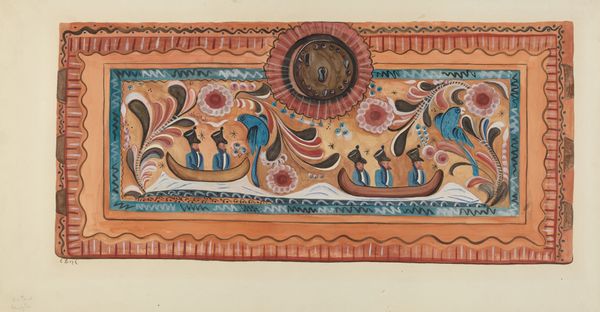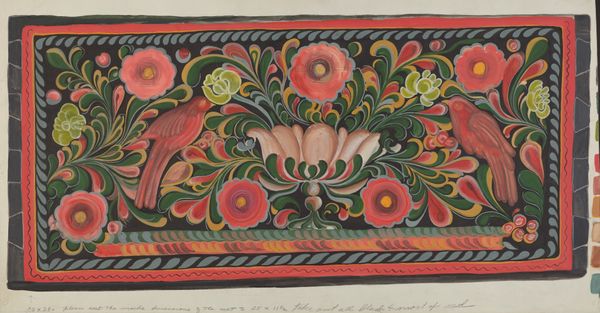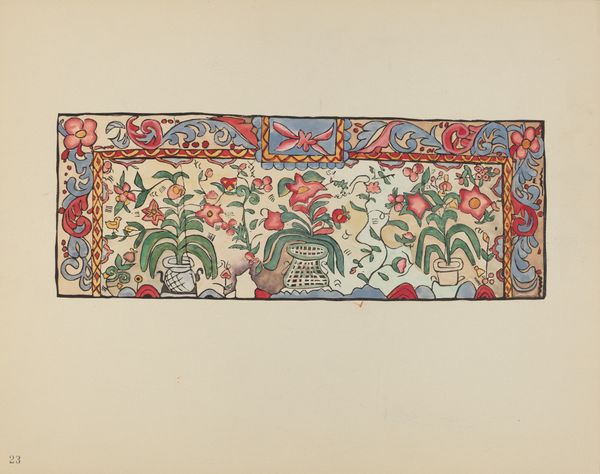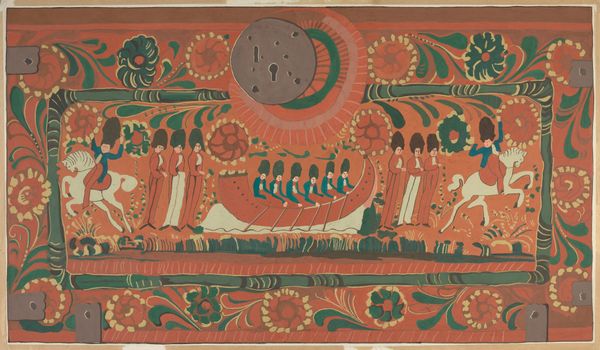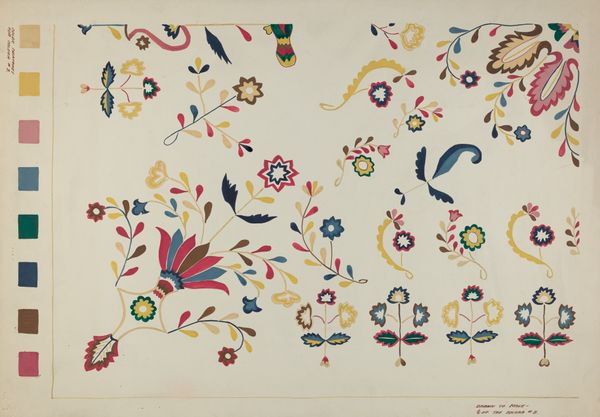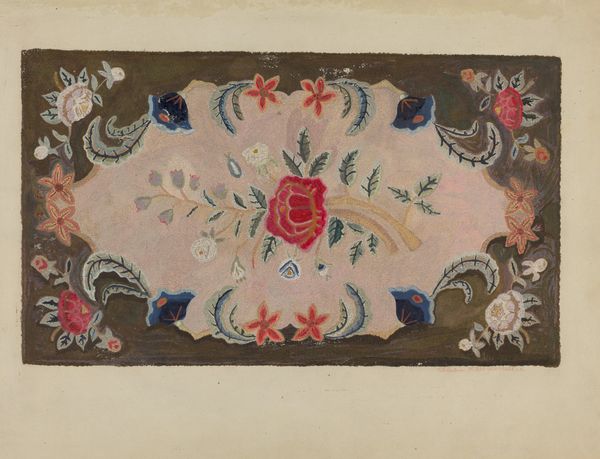
drawing, painting, watercolor
#
drawing
#
water colours
#
pastel soft colours
#
narrative-art
#
pottery
#
painting
#
figuration
#
watercolor
#
folk-art
#
watercolour bleed
#
watercolour illustration
Dimensions: overall: 43.5 x 71 cm (17 1/8 x 27 15/16 in.) Original IAD Object: 12 1/2"x 24 1/2"
Copyright: National Gallery of Art: CC0 1.0
Curator: Immediately, what strikes me is the folksy, almost fairytale-like quality it exudes. There's something very endearing about the narrative captured within those borders. Editor: Indeed. We're looking at "Chest," a work painted circa 1938 by Margery Parish. It's a watercolor drawing and painting depicting, well, precisely what it says: a chest. Curator: And it seems to represent far more than mere utility, wouldn't you say? Notice the emphasis placed on decorative elements and the narrative scene of figures fleeing? This draws the eye in! I am also drawn in by the limited use of colour that seems so deliberate. Editor: I agree! Consider the implications. A handmade, hand-painted chest situates itself firmly within a tradition of craft often marginalized by fine art establishments. The choice of watercolor and a muted color palette—observe the careful watercolor bleeds—suggests an intentional engagement with the history of domestic art making. We must consider then how labor intersects with Parish’s aesthetic choices. Curator: Absolutely! This could also suggest issues related to folk-art—often associated with women—its place in exhibitions or the market. But doesn’t that narrative also invoke something deeper? This isn't mere decoration; it reflects anxieties tied to gender and protection. The image implies flight; a female figure, perhaps evading pursuit… what story is that chest safeguarding? Editor: Precisely! The chest then operates on a multilayered symbolic plane, negotiating societal anxieties surrounding gender, vulnerability, and narrative traditions. Think about it in light of the political landscape in 1938: growing anxieties of an oncoming war! Could this art hold hidden narratives, maybe alluding to themes of escape, or perseverance, as seen by a woman in her unique intersectional experience of her time. The floral borders contrast sharply with the urgent narrative inside and yet contain the energy. Curator: Such a fascinating interplay, a tension brought on with those deliberately muted watercolours— and how Parish turns material constraints into powerful means for visual story-telling! Editor: Agreed! It reminds me again of the necessity of broadening traditional readings to accommodate diverse and nuanced perspectives, emphasizing identities and histories we thought we knew.
Comments
No comments
Be the first to comment and join the conversation on the ultimate creative platform.
